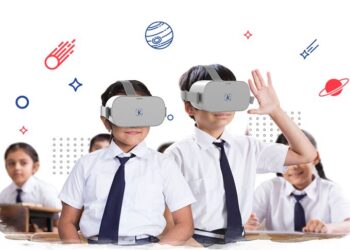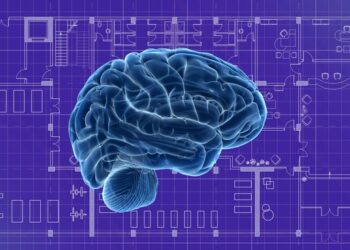The world is changing at an unprecedented pace. The jobs and skills that are relevant today may be obsolete in a decade. As parents and educators, our most critical task is to equip children with the tools they need to navigate this uncertain landscape. This isn’t just about academic excellence; it’s about fostering adaptability, resilience, and a mindset of continuous learning. The traditional education model, which often prioritizes rote memorization over critical thinking, is becoming increasingly inadequate. We must move beyond the confines of the classroom and focus on cultivating a holistic skill set that will empower our children to thrive in a future shaped by technology, globalization, and social change.
This comprehensive article explores the essential skills and approaches required to prepare children for the challenges and opportunities of the 21st century. It delves into the importance of soft skills, the integration of technology, the role of emotional intelligence, and the necessity of fostering a love for lifelong learning. The goal is to provide a roadmap for parents and educators who are committed to giving their children the best possible foundation for success and well-being.
A. The Crucial Role of Soft Skills
While technical knowledge is important, it’s the so-called “soft skills” that will truly set children apart. These are the interpersonal and emotional competencies that enable them to work effectively with others and navigate complex social situations.
A. Critical Thinking and Problem-Solving: In a world of abundant information, the ability to discern fact from fiction and solve novel problems is paramount. Children need to be taught how to ask probing questions, analyze information from multiple sources, and develop creative solutions. This skill goes beyond simply knowing an answer; it involves the process of thinking through a problem logically and systematically. Encourage children to engage in puzzles, strategy games, and open-ended projects that require them to think critically.
B. Collaboration and Communication: Most modern workplaces are highly collaborative. The ability to work effectively in a team, listen to different perspectives, and articulate one’s own ideas clearly is indispensable. Encourage group projects, team sports, and family discussions where children can practice these skills in a safe environment. Effective communication is not just about speaking; it’s also about active listening and understanding nonverbal cues.

C. Adaptability and Resilience: The future will be characterized by constant change. Children who are adaptable and resilient will be better equipped to handle setbacks, embrace new challenges, and pivot when circumstances change. Teach them that failure is not the opposite of success, but a stepping stone towards it. Encourage them to try new things, step out of their comfort zones, and learn from their mistakes without fear of judgment.
D. Creativity and Innovation: As AI and automation take over routine tasks, human creativity will become even more valuable. Fostering a child’s natural curiosity and encouraging them to think “outside the box” is essential. Provide opportunities for creative expression through art, music, storytelling, and imaginative play. Don’t just focus on the final product; celebrate the process of creation itself.
B. Integrating Technology with Purpose
Technology is not just a tool; it’s an environment in which children will live, work, and socialize. The key is to teach them to be producers of technology, not just passive consumers.
A. Digital Literacy and Citizenship: Children need to understand how to navigate the digital world safely and responsibly. This includes understanding online privacy, recognizing misinformation, and practicing respectful online behavior. Teach them about the permanent nature of their digital footprint and the importance of being a positive digital citizen.
B. Computational Thinking and Coding: While not every child needs to become a programmer, computational thinking—the process of breaking down complex problems into smaller, manageable steps—is a valuable skill for any future career. Introducing children to basic coding concepts through platforms like Scratch or fun, game-based apps can help them develop logical reasoning and problem-solving abilities.
C. Leveraging Technology for Learning: Technology offers incredible tools for personalized learning. From educational apps and online tutorials to virtual field trips and interactive simulations, technology can make learning more engaging and effective. Encourage children to use these resources to explore their interests and learn at their own pace.
C. The Foundational Pillars of Emotional Intelligence
Emotional intelligence (EQ) is often a better predictor of success than IQ. It’s the ability to understand and manage one’s own emotions, and to recognize and influence the emotions of others.
A. Self-Awareness: The first step to emotional intelligence is understanding one’s own feelings, strengths, and weaknesses. Encourage children to reflect on their emotions and to use a rich vocabulary to describe how they feel. This can be done through simple check-ins, journaling, or open conversations about their day.
B. Empathy: The ability to put oneself in another’s shoes is a cornerstone of strong relationships and effective leadership. Encourage children to consider the feelings of others, whether it’s a friend who is sad or a character in a book. Discuss different perspectives and the reasons behind people’s actions. Community service and volunteering can also be powerful ways to cultivate empathy.
C. Self-Regulation: Life will inevitably throw curveballs. Teaching children how to manage their emotions and impulses in a healthy way is crucial for their well-being and success. This can involve teaching calming techniques, encouraging them to take a break when they’re feeling overwhelmed, and helping them find constructive ways to express their frustrations.
D. Nurturing a Growth Mindset and Lifelong Learning
The most valuable skill we can give our children is a growth mindset—the belief that their abilities and intelligence can be developed through dedication and hard work. This stands in contrast to a “fixed mindset,” which assumes that abilities are innate and unchangeable.
A. Praising Effort, Not Just Outcome: Instead of saying “You’re so smart,” try saying “I’m so proud of how hard you worked on that.” This simple shift in language reinforces the idea that effort is what leads to success, not innate talent. When they encounter a difficult problem, praise their persistence and resilience.
B. Embracing Mistakes as Learning Opportunities: Create an environment where mistakes are seen as opportunities for growth, not failures. When a child makes a mistake, ask them what they learned from it and what they would do differently next time. This reframes the experience from a negative event to a valuable lesson.
C. Fostering a Love for Learning: The future is all about continuous learning. The goal is not just to get a degree, but to become a lifelong learner. Encourage children to explore topics that genuinely interest them, whether it’s through documentaries, books, podcasts, or online courses. Make learning an adventure, not a chore.

E. The Role of Parents and Educators
Parents and educators are the architects of a child’s future. Our actions and attitudes have a profound impact on their development.
A. Be a Role Model: Children learn by observation. Show them what a growth mindset looks like by embracing new challenges yourself, admitting when you don’t know something, and demonstrating a passion for learning. Show them how to handle setbacks with grace and resilience.
B. Prioritize Play and Exploration: Free play is not a waste of time; it’s a crucial component of learning. It’s where children develop creativity, social skills, and problem-solving abilities. Allow them ample time for unstructured play and exploration, both indoors and outdoors.
C. Encourage Hobbies and Passions: Hobbies are where a child’s true interests can flourish. Whether it’s building model rockets, writing stories, or learning an instrument, these activities can teach them valuable skills like discipline, patience, and a sense of accomplishment.
D. Connect Learning to the Real World: Help children understand why what they are learning matters. Connect classroom lessons to real-world applications. For example, show them how math is used in cooking or how science is at work in a garden. This makes learning more meaningful and relevant.
Conclusion
Preparing kids for the future is a multifaceted endeavor that requires a shift in our collective mindset. It’s about moving beyond traditional academic metrics and focusing on a holistic skill set that includes emotional intelligence, critical thinking, and a love for continuous learning. By fostering these essential competencies, we can empower our children to not only survive but also to thrive in an ever-changing world. It’s a long-term investment in their success, their happiness, and their ability to make a positive impact on the world. The journey begins now, and the destination is a future full of possibility.












